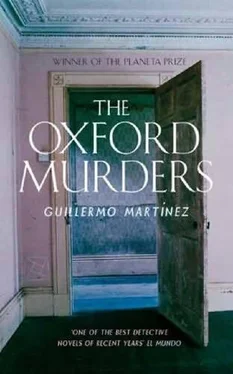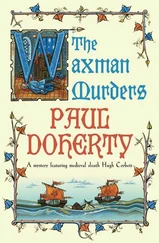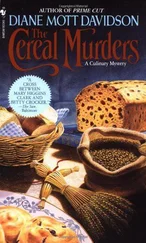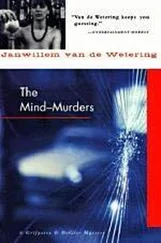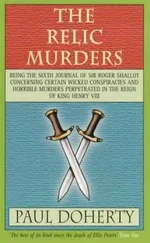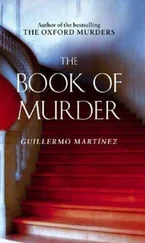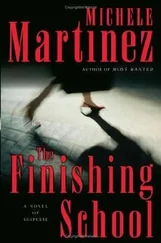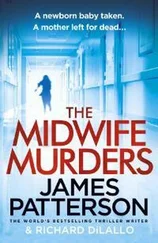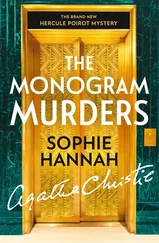“But then, just as everything seemed to be going Crafford’s way, the Oxford Times printed a letter from a reader, a certain Lorna Craig, a girl who was a huge fan of crime novels,” said Seldom, indicating Lorna with his glass. They smiled, as if sharing an old joke. “The letter simply pointed out that in an old edition of Ellery Queen’s Mystery Magazine there was a story about a similar death by remote telepathy, the only difference being that the brain wave went through a football stadium during a penalty shot instead of through a room full of chess players. The funny thing was that in the story the theory of the brainstorm, now put forward by Crafford’s lawyer, was taken to be true and to be the solution to the mystery. But how fickle is human nature: as soon as people found out that Crafford might have copied the idea, they all turned against him. The lawyer tried to persuade the jury that Crafford wasn’t much of a reader and was unlikely to know the story, but it was no use. The idea, by dint of repetition, had lost some of its attraction and now sounded ridiculous, like something that only a writer could have thought up. The jury, a jury of fallible men, as Kant would say, found Crafford guilty even though no other proof against him had been found. Let us say this: the only piece of evidence presented during the entire trial was a fantastical story that poor Crafford had never even read.”
“Poor Crafford fried his wife!” exclaimed Lorna.
“As you can see,” laughed Seldom, “some people were totally convinced of his guilt and didn’t need proof. Anyway, I remembered the case the night of the concert. If you recall, the percussionist suffocated just as the music reached the climax. Well, I asked Lavand about the kind of effects that can be created from a distance and he lent me a book on hypnotism. I haven’t had time to look at it yet.”
A waitress came to take our order. Lorna said I should have fish and chips, and then got up to go to the ladies. Once Seldom had ordered and the waitress had left, I returned the envelope containing the photographs to him.
“Were you able to remember anything?” he asked. When he saw my doubtful look, he said: “It’s difficult, isn’t it? Going back to the beginning as if one knew nothing. Emptying one’s mind of all that came afterwards. Did you see anything that you hadn’t noticed before?”
“Only this: when we found Mrs Eagleton’s body, she didn’t have a blanket over her legs,” I said.
Seldom leaned back in his chair and stroked his chin.
“That…could be interesting,” he said. “Yes, now that you mention it, I remember clearly, she always had a tartan blanket over her legs. When she was going out, at least.”
“Beth is sure that her grandmother still had the blanket when she came downstairs at two. The police searched the house for it later but couldn’t find it. Inspector Petersen didn’t mention any of this to us,” I said a little resentfully.
“Well,” said Seldom, gently mocking, “he is the police inspector in charge of the case. Perhaps he doesn’t feel the need to report every single detail to us.”
I laughed.
“But we know more than he does,” I said.
“Only in the sense that we’re familiar with Pythagoras’s theorem.”
His face darkened, as if suddenly reminded of his worst fears. He leaned towards me and said confidentially:
“His daughter told me he has trouble sleeping at night. She’s found him awake in the early hours several times, trying to read books on mathematics. He called me again this morning. I think he’s worried, like me, that Thursday will be too late.”
“But Thursday is only the day after tomorrow,” I said.
“Pasado mañana,” said Seldom. “The day after tomorrow. The thing is, tomorrow is no ordinary day. That was why Petersen called. He wants to send some of his men to Cambridge.”
“What’s happening tomorrow in Cambridge?” Lorna was back, carrying our beers.
“I have a feeling it’s all because of the book I lent Petersen, giving a rather fanciful account of the story of Fermat’s theorem. It’s the most ancient unsolved problem in mathematics,” he said to Lorna. “Mathematicians have been struggling with it for over three hundred years and, tomorrow in Cambridge, they may manage to prove it for the first time. The book traces the origin of the conjecture on Pythagorean triples, one of the secrets of the earliest years of the sect, before the fire when, as Lavand said, magic and mathematics were still closely linked. The Pythagoreans believed that numerical properties and relationships represented the secret number of a deity which should be kept secret within the sect. They could disseminate theorems, for use in daily life, but never their proofs, just as magicians swear not to reveal their tricks. Members of the sect broke this rule on pain of death.
“The book I lent Inspector Petersen claims that Fermat himself belonged to a more recent but no less strict sect than the Pythagoreans. He announced in his famous note in the margin to Diophantus’s Arithmetical that he had proof of his conjecture but, after his death, neither that nor any of his other proofs were found among his papers.
I expect what alarmed Petersen was the fact that there are several strange deaths linked with the story of the theorem. A lot of people have died, of course, over the three hundred years, including those who came close to finding a proof of the theorem. But the book’s author is shrewd and he manages to make some of the deaths seem truly suspicious-Taniyama’s suicide in the late fifties, for instance, with the strange note he left for his fiancée.”
“In that case the murders would be…”
“A warning,” said Seldom. “A warning to the world of mathematicians. As I told Petersen, I think the conspiracy set out in the book is probably a load of ingenious nonsense. But there is something that worries me: Andrew Wiles has worked in absolute secret for the past seven years. Nobody has a clue as to what his proof will be. He has never allowed me to look at any of his papers. If something should happen to him before his presentation and those papers disappeared, another three hundred years might pass before anyone repeated the proof. That’s why, quite apart from what I think, it’s not a bad idea for Petersen to send some of his men to Cambridge. If anything happened to Andrew,” he said, and his face darkened again, “I’d never forgive myself.”
On Wednesday 23 June I woke around midday. The heavenly smells of coffee and freshly made waffles were coming from Lorna’s tiny kitchen. Her cat, Sir Thomas, had managed to drag part of the bedspread on to the floor and he was now curled up on it at the foot of the bed. I walked around him and went to the kitchen to kiss Lorna. The paper was open on the table and I glanced through it while Lorna poured the coffee. A series of murders with mysterious symbols, said the Oxford Times with undisguised local pride, had become the lead story in the main London papers. They reproduced on their front page some of the headlines from the previous day’s national papers. But that was all, there had obviously been no new developments in the case.
I searched the inside pages for news of the seminar in Cambridge. All I found was a brief item entitled ‘Mathematicians’ Moby Dick’, including the long list of failed attempts to prove Fermat’s theorem over the years. The article mentioned that bets were being laid in Oxbridge on the outcome of the last of the afternoon’s three lectures and the odds at the moment were still six-to-one against Wiles.
Lorna had booked a tennis court for one o’clock. We stopped off at Cunliffe Close to collect my racket and then played for a long time without being interrupted, concentrating only on the ball going back and forth over the net, in that small rectangle out of time. As we left the courts I saw on the clubhouse clock that it was almost three and I asked Lorna if we could make a quick stop at the Institute on the way back. The building was deserted and I had to switch on lights as I went upstairs. In the computer room, which was empty too, I checked my e-mail. There was the short message that was being spread like a password to mathematicians all over the world: Wiles had done it! There were no details about the final exposition. All it said was that his proof had convinced the experts and that, once written up, it might be up to two hundred pages long.
Читать дальше
